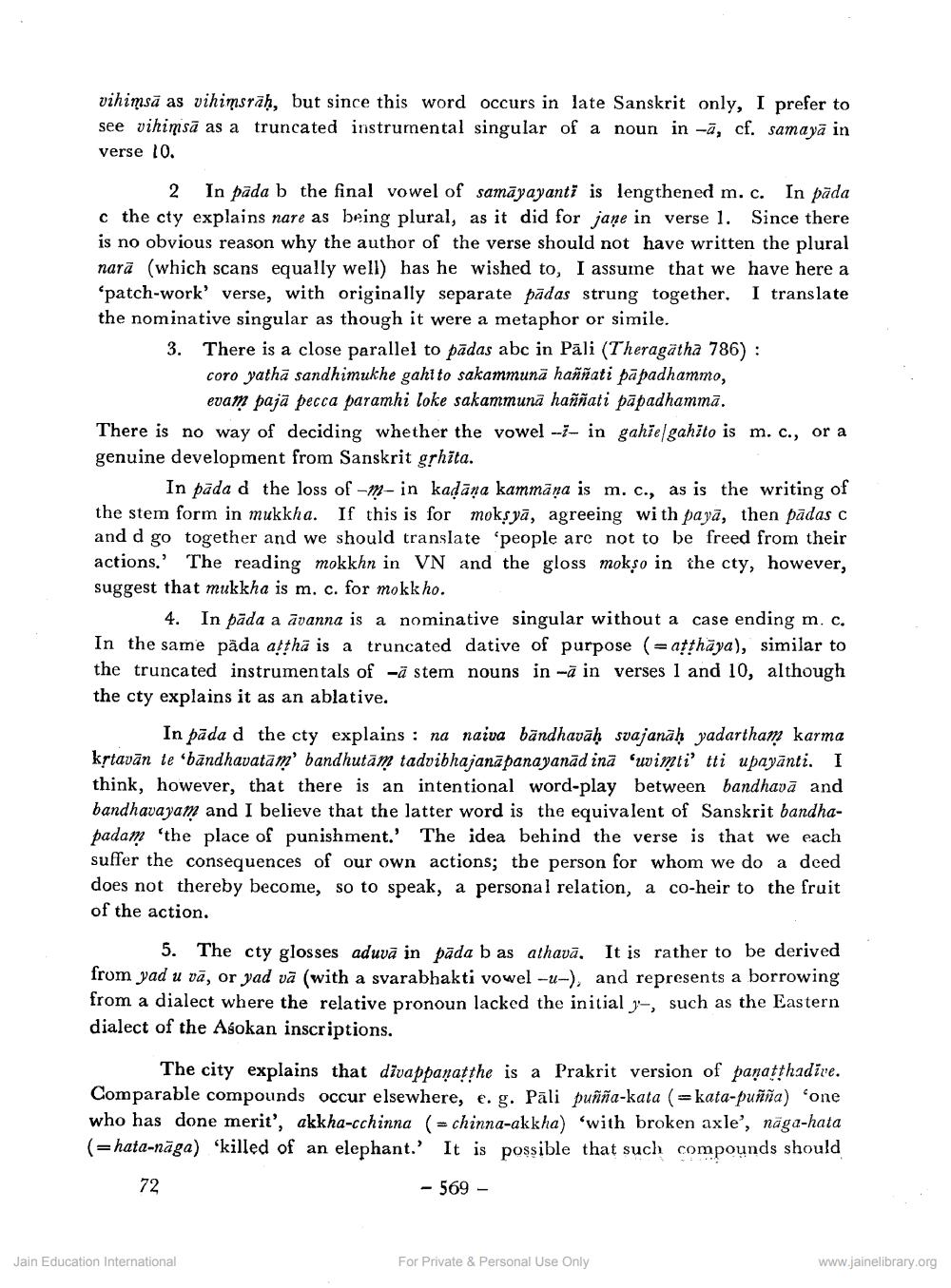________________
vihimsa as vihimerah, but since this word occurs in late Sanskrit only, I prefer to see vihinsä as a truncated instrumental singular of a noun in-, cf. samaya in
verse 10.
2 In pada b the final vowel of samayayanti is lengthened m. c. In päda e the ety explains nare as being plural, as it did for jaye in verse 1. Since there is no obvious reason why the author of the verse should not have written the plural nara (which scans equally well) has he wished to, I assume that we have here a 'patch-work' verse, with originally separate pädas strung together. the nominative singular as though it were a metaphor or simile.
3. There is a close parallel to pādas abc in Pali (Theragatha 786): coro yatha sandhimukhe gahl to sakammunā haññati pāpadhammo, evam paja pecca paramhi loke sakammuna haññati papadhamma.
There is no way of deciding whether the vowel - in gahie/gahito is m. c., or a genuine development from Sanskrit grhita.
In pada d the loss of -- in kadāṇa kammāṇa is m. c., as is the writing of the stem form in mukkha. If this is for meksya, agreeing with paya, then padas c and d go together and we should translate 'people are not to be freed from their actions. The reading mokkhn in VN and the gloss moko in the cty, however, suggest that mukkha is m. c. for mokkho.
4. In pāda a avanna is a nominative singular without a case ending m. c. In the same pada aṭṭha is a truncated dative of purpose (atthaya), similar to the truncated instrumentals of a stem nouns in -a in verses 1 and 10, although the cty explains it as an ablative.
In pada d the cty explains: na naiva bandhavaḥ svajanaḥ yadartham karma kṛtavan te bandhavatām bandhutām tadvibhajanāpanayanad ina wimtiti upayanti. I think, however, that there is an intentional word-play between bandhava and bandhavayam and I believe that the latter word is the equivalent of Sanskrit bandhapadam 'the place of punishment.' The idea behind the verse is that we each suffer the consequences of our own actions; the person for whom we do a deed does not thereby become, so to speak, a personal relation, a co-heir to the fruit of the action.
5. The cty glosses aduva in pada b as athava. It is rather to be derived from yad u vä, or yad sa (with a svarabhakti vowel --), and represents a borrowing from a dialect where the relative pronoun lacked the initial, such as the Eastern dialect of the Asokan inscriptions.
The city explains that divappanatthe is a Prakrit version of panaṭṭhadive. Comparable compounds occur elsewhere, e. g. Pāli puñña-kata (=kata-puñña) 'one who has done merit', akkha-cchinna (= chinna-akkha) 'with broken axle', naga-hata (=hata-naga) 'killed of an elephant.' It is possible that such compounds should
72
- 569 -
Jain Education International
For Private & Personal Use Only
www.jainelibrary.org




